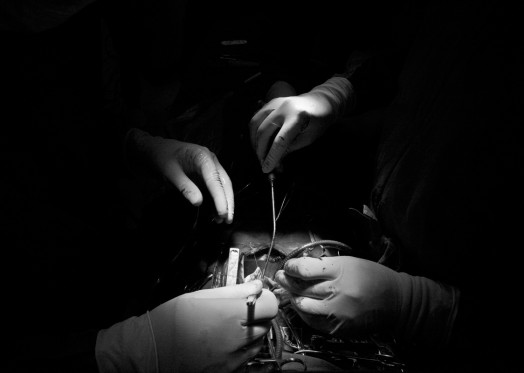open hearts

Little Carmeline wasn’t playing like the other children in the small village of Shisong, North West Cameroun. At two she only weighted 5 kg and was always sick, with frequent fevers and weak feet. Her mother Pascaline, a teacher, finally took her to the nearby Cardiac Center where she was diagnosed a severe aortic stenosis. She wouldn’t have survived without a surgery. She underwent the operation in April 2012 and she now runs at school with the other kids, albeit on shaky legs.
Six years old Loic’s fate was doomed from the start. Born with a complex heart pathology, with no parents and no means to see a doctor, he was lucky enough to be rescued by the nuns who manage the Shisong hospital. His life was saved by the team of Italian surgeons who twice a year travel to Cameroun to perform open heart surgeries at the Cardiac Center, the only facility of this kind in West Africa.
Built and supplied by the efforts of the Milan-based Associazione bambini cardiopatici nel mondo, the Shisong Cardiac Center has since 2008 successfully operated dozens of children with lethal genetic or acquired heart deseases. Loic will need another surgery, but he now lives a normal life: after school he takes me to the humble hut in Kumbo where he sleeps with his granny, and I trail behind him in the burning midday heat while he jumps and runs through the dusty streets.
Back in the operating theatre the team is busy since the early morning. Each operation can last five to eight hours or more. The cardiologist at the vascular Doppler has explored the ventricles and the valves. The anesthetist has put the patient to sleep. The nurses are ready with the instruments and the drugs. The perfusionist is testing the extracorporeal circulation machine. It’s stunning to see a heart that ceases to beat, the lancet tearing the tissue apart, the needle that stitches, and then the heart that begins to pulsate again. But it’s not over.
The post surgical follow up in the intensive care unit is crucial to the survival of the patient: it means sleepless nights at the kids’ bedside, with the eyes glued to the monitors, while the pumps inject heavy doses of drugs in the children’s frail bodies. It’s a race against time: children often come too late to the Center, or in desperate conditions. Fifteen months old Robby Roy didn’t make it. At 10.30 pm, after thirteen hours on the operating table, his heart refused to bounce back.





